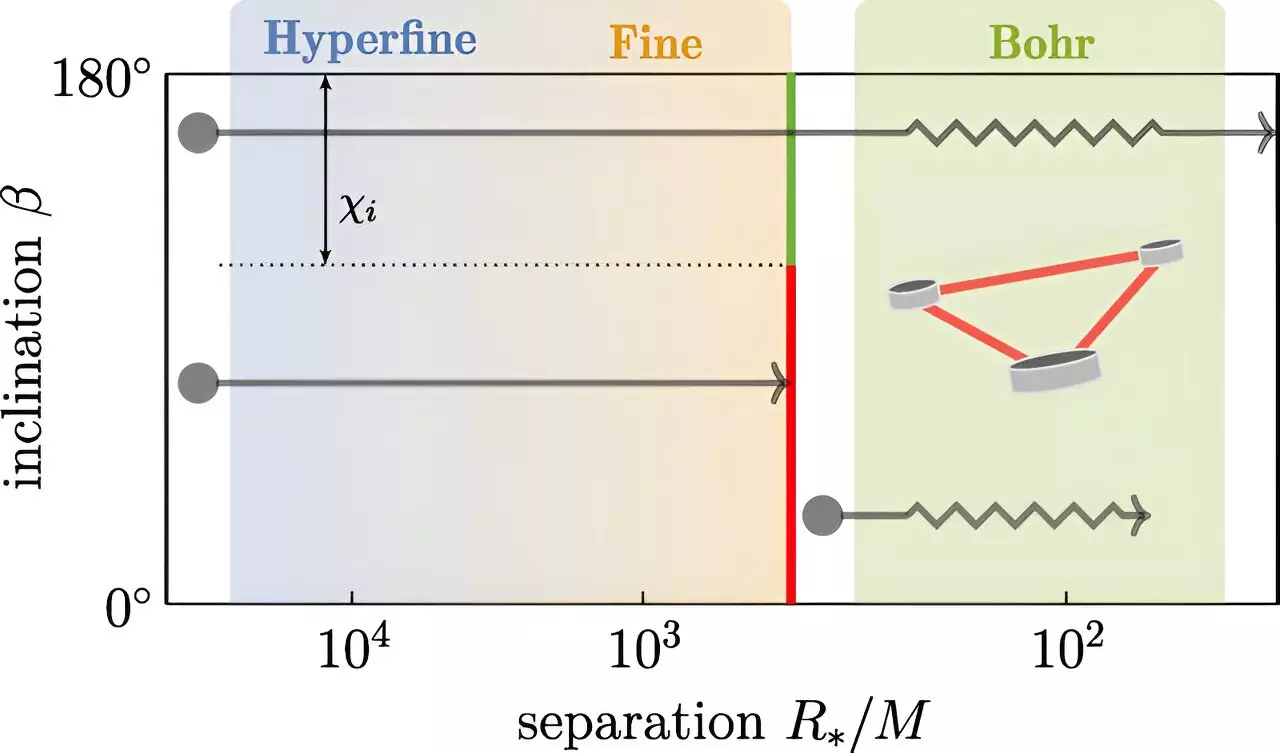Recent advancements in astrophysics have opened exciting avenues for understanding the universe, particularly through the study of black holes and their mergers. A groundbreaking paper published in *Physical Review Letters* highlights research conducted by physicists from the University of Amsterdam and the Niels Bohr Institute in Copenhagen. This study suggests that vigilant observations of black hole pairs merging may offer insights into the existence of new particles beyond those currently known, specifically ultralight bosons. The implications of these findings could bridge gaps in our understanding of several fundamental questions in physics and cosmology.
Gravitational waves, ripples in spacetime produced by massive astronomical events such as black hole mergers, contain invaluable information about the event’s dynamics and the objects involved. The study led by Giovanni Maria Tomaselli and Gianfranco Bertone, along with former UvA master’s student Thomas Spieksma, emphasizes the intricate information encoded in these waves, particularly regarding the shape and evolution of black hole orbits. By analyzing these gravitational waves, the researchers propose that we could identify signals indicative of new particle types, potentially revolutionizing our understanding of the fundamental constituents of matter.
The Role of Black Hole Superradiance
Central to the research findings is the phenomenon of black hole superradiance, wherein a rotating black hole can emit particles, forming a “cloud” of ultralight bosons around it. This mechanism is likened to an atom’s electron cloud, emphasizing the interconnectedness of cosmic and quantum phenomena. The existence of these ultralight bosons could provide answers to unresolved questions in various fields of physics, including particle physics and cosmology. However, the current experimental framework has yet to identify these elusive particles, making the theoretical framework proposed by the researchers an intriguing proposition.
New Phenomena and Their Implications
The authors detail notable phenomena observed in the interactions between black holes and ultralight boson clouds. Two of these phenomena, resonant transitions and ionization, point to the complex behaviors that may emerge during black hole mergers. Resonant transitions occur when the boson cloud “jumps” states, a behavior seen in conventional atomic systems and crucial for understanding the evolution of these gravitational “atoms.” Ionization, whereby portions of the cloud are expelled, provides additional imprints on gravitational wave signatures. Both phenomena underscore the potential for detecting signatures of new physics through gravitational wave observations.
Potential Outcomes and Future Observations
The research suggests two intriguing scenarios that could arise when black holes merge in the presence of ultralight boson clouds. One possibility is that if the black holes and the boson cloud spin counter to one another, the cloud may endure, leading to detectable signatures via ionization effects. Conversely, in situations where resonant transitions dominate, the boson cloud may dissipate, resulting in unique orbital characteristics, including distinct values of eccentricity and inclination. These characteristics could be measurable through future gravitational wave experiments, setting up an innovative strategy for exploring new physics.
This research proposes a dual approach to discovering ultralight bosons. By either detecting ionization effects in gravitational wave signals or identifying anomalies in the eccentricity and inclination of merging black holes, physicists can take significant steps toward answering critical questions about the nature of the universe. The findings encourage the scientific community to leverage upcoming gravitational wave observations, potentially leading to the first evidence of these previously theorized particles.
The intersection of black hole physics and particle physics offers a rich tapestry of possibilities for unveiling the mysteries of the cosmos. The study by the Amsterdam and Copenhagen teams paves a compelling path forward in the quest for understanding ultralight bosons. As gravitational wave detectors improve and expand our observational capabilities, the potential to validate these theoretical predictions becomes increasingly realistic. The implications of discovering new particles could reshape everything from our understanding of dark matter to the fundamental forces that govern the universe, reaffirming the significance of continued exploration in both astrophysics and particle physics.


Leave a Reply